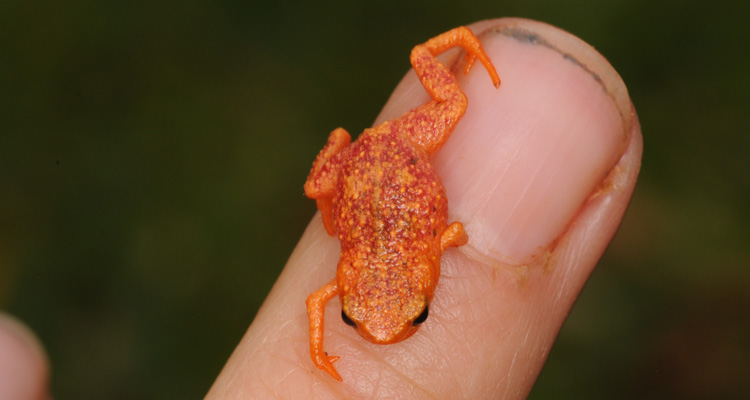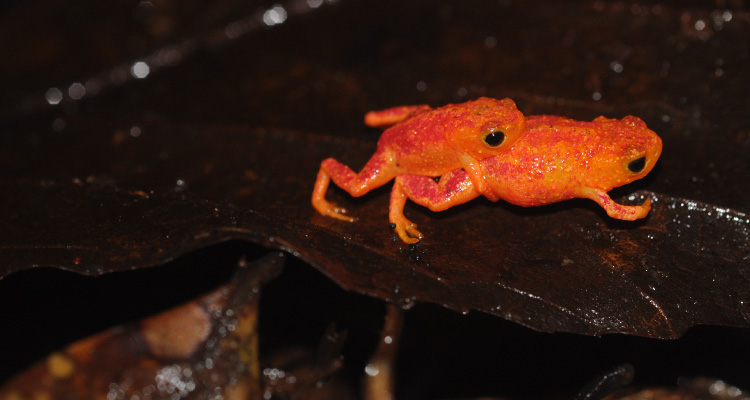
When he calls, she can’t hear him
Tiny Brazilian frogs are deaf to their own calls.
Pumpkin toadlets, found on the leaf litter of Brazil’s Atlantic forest, are among the smallest frogs in the world.

| A pumpkin toadlet, brachycephalus pitanga, on a fingertip. Photo: Sandra Goutte. |
An international team from Brazil, Denmark and the United Kingdom has discovered that two species of these tiny orange frogs cannot hear the sound of their own calls.
This is a unique case in the animal kingdom of a communication signal persisting even after the target audience has lost the ability to detect it.
Hearing tests in the lab
- We have never seen this before: These frogs make sounds that they cannot hear themselves, says Associate Professor Jakob Christensen-Dalsgaard, University of Southern Denmark.
He led the laboratory testing of the frogs’ hearing abilities at the University of Southern Denmark. The findings have been confirmed by anatomical studies at Cambridge University, UK. The study is published in the journal Scientific Reports.

| Jacob Christensen-Dalsgaard and students on a field trip in Svanninge Bjerge, Denmark. SDU has a field station in the area. Photo: Kasper Tybjerg/Bikubenfonden. |
Lead author of the study is Dr. Sandra Goutte, who was a postdoc at Universidade Estadual de Campinas, São Paulo, when the study was conducted.
Call to find a mate
Most male frogs call to signal their presence to the opposite sex and find a mate, but this is costly: it could attract predators and parasites, and it uses up energy and time.
- One would think that if a signal is not perceived by its target audience, it would be lost through evolution, says Dr. Sandra Goutte.

| A pair of B. pitanga. Photo: Sandra Goutte. |
The discovery made by the researchers is thus very surprising: when they tested the hearing sensitivity of the toadlets, the researchers found that these frogs are not sensitive to the sound frequencies of their own calls.
Sound may be a byproduct
They found that this is because the part of the ear responsible for high-frequency hearing is vestigial in these species.
Because these tiny frogs are brightly coloured, diurnal and known to use visual signals, the researchers hypothesize that visual communication has replaced acoustic communication.
The movement of the throat when males are calling could constitute a visual signal, in which case the call itself would represent a by-product of the true signalling behaviour.
Evolution in the making
Like many brightly-coloured tropical frogs, pumpkin toadlets are highly toxic, which may lower the risk of predation when they are calling.
- The singular communication system in these pumpkin toadlets is an example of evolution ‘in the making’, says Jakob Christensen-Dalsgaard.
Studying them further will advance our understanding of the mechanisms underlying the evolution of communication systems in animals.
Meet the researcher
Jakob Christensen-Dalsgaard is a biologist and associate professor at Department of Biology.